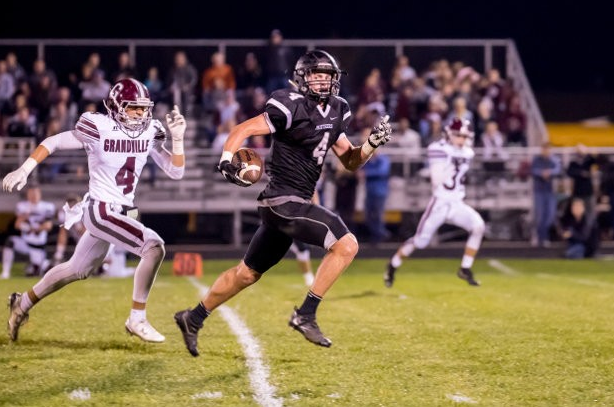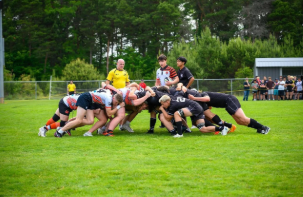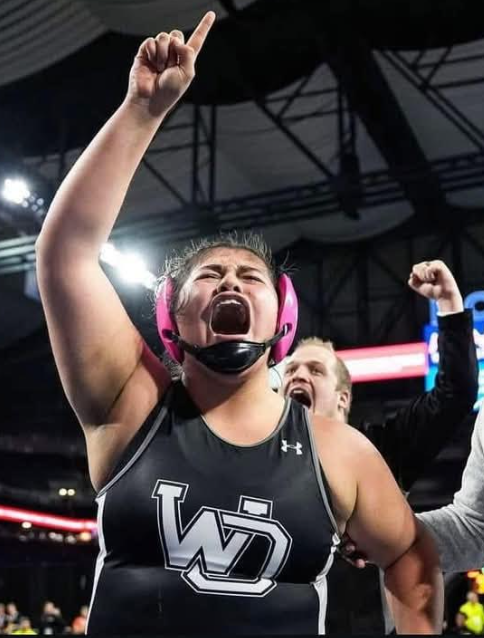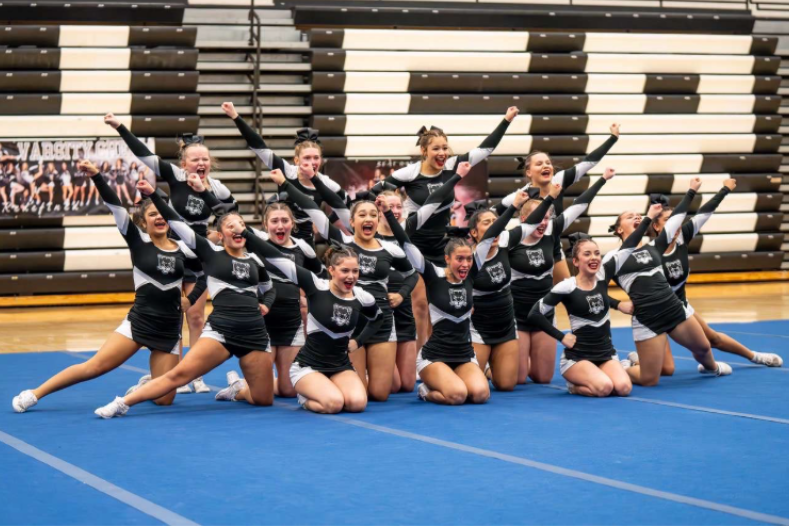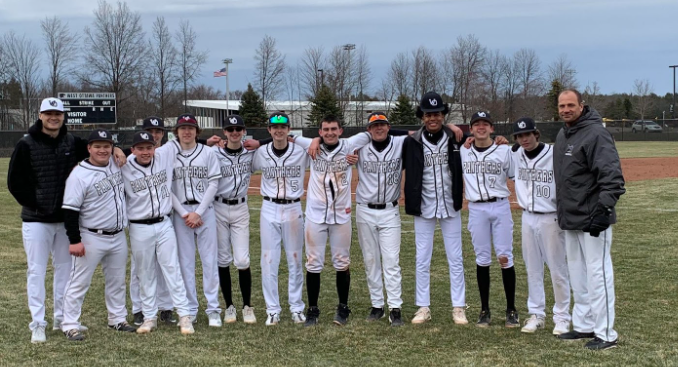On a mild October Friday night two seasons ago, tight end Liam Cavanaugh waits at the 37 yard line, his head turns, watching the ball. As Quarterback Isaac Van Dyke signals his offense, he starts his run towards the 20 yard line. He gets there at the same time as the ball, along with two other players. Cavanaugh easily catches the ball, ducks underneath the two players and runs into the endzone, leaving a trail of fallen Buccaneers in his path and contributing to West Ottawa’s 41-6 win over Grand Haven.
Cavanaugh was a key player for West Ottawa during their historic 2017 season. His skills got him an offer from Davenport, which he accepted shortly after the season ended. He couldn’t wait to continue his football career, but knew that his first year of college football would come with new challenges. Cavanaugh learned a lot during his first football season at Davenport.
Cavanaugh quickly learned that the commitment to college football was much greater than for high school “My first fall [college] camp started with mandatory 7am breakfast, 8am lifts, 9:30-11:30am film study, 12:00pm mandatory lunch, and then you’d get a little break. Then a 2:30-5:15ish practice followed by mandatory dinner and a 7-9pm position meeting/film study. The day was topped off with a 11pm bed check,” Cavanaugh said. High school teams only practice for a few hours a day, but requirements at college can be all day. Whenever he wasn’t at practice, Cavanaugh had to be productive and not abuse the freedom that college allows.
Football took up a lot of time, but having good teammates made the days enjoyable. “Everyone cares. Lots of kids in high school mess around and don’t take the game seriously, but here almost everyone treats football like a job,” Cavanaugh said. Cavanaugh was happy to find that college athletes took football just as seriously as he did, willingly giving up their whole day to train. College football was exactly the next step that Cavanaugh needed.
Being on the college team required immense commitment. “Everything at this level is very fast paced. It’s either catch up or fall off.” Slacking doesn’t fly in college because all the players are determined to get better, so slackers fall behind. Luckily, Cavanaugh always put in effort in high school, so he easily kept up with the college athletes.
Balancing athletics and academics is difficult for new college athletes. “My school makes the transition as easy as they can for kids. Freshmen and new transfers have mandatory study tables every week of their first school year, which is 1.5 hour sessions of supervised school work, typically tutors are on hand too. Students who don’t have a GPA of 3.0 or higher must remain in study tables until they meet the standard.” Cavanaugh had to adjust to meet the high standards for college athletes on and off the field, but strict guidelines and tutors helped him succeed.
Cavanaugh is enjoying college, but misses the emotion behind high school games. “I no doubt miss playing under the lights, feeling like the whole city is supporting you. My games are in the afternoon and my school’s stadium isn’t that large.” Nothing can compare to playing in front people you’ve known forever, but Cavanaugh has learned that the privilege of playing in college is worth the sacrifice of leaving his hometown behind.
Cavanaugh’s personal results this year were moving from second string to starting tight end halfway through the season. His hopes for next season are to be starting linebacker and on the all-GLIAC football team.
Cavanaugh was a great player for West Ottawa and continues to thrive at Davenport. Cavanaugh’s hard work in high school prepared him for the transition into college athletics.

